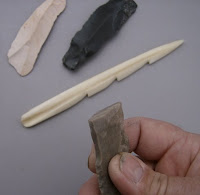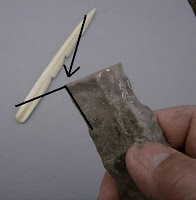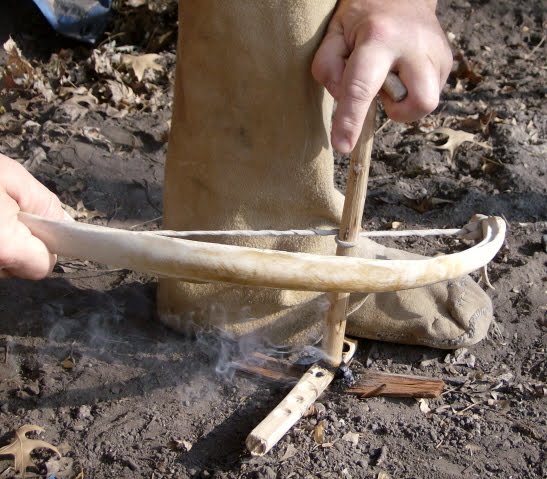
I was contacted by a Renaissance Faire promoter to demonstrate at an upcoming event. In the past I have done a few, representing European stone age. A little bit of a stretch for a ren faire, but they appreciate the educational aspect..."edu-tainment" they call it. Besides, bone needles invented 27,000 years ago, were still used by the common man into medevil times. Flintknapping skills once used to make spearpoints translated into the budding gun flint industry. A lot of the tools & technics utilized in the European stone age were similarly found in various cultures around the world - hand drill fire-making, darts & atlatls, flintknapping stone tools. One interesting innovation of the "Aurignacian" stone age culture of Europe (28,000 to 21,000 B.C.) was a tool we call the burin. The name "Aurignacian" refers to particular way people were living, determined by the artifacts they left. They had refined striking blades off of a specially prepared flint core, to modify into different tool forms...end scrapers, backed knives, and burins. A burin was flint blade broken at an oblique angle, and beveled into a chisel-like tool used to carve antler, wood, and bone. This invention helped to create a whole new series of bone and antler tools and weapons. Some of the earliest ivory carvings of animal and human forms began to appear at this time. The burin was used to score deep parallel grooves in lengths of antler and bone to isolate slivers that were pried out and worked into needles and spear heads.

This burin was made by snapping a blade at an angle. Then a quick stroke of a small hammerstone or billet takes off the outside edge to leave a sharp chisel edge. In the background in a barbed bone spear point I've been working on.



